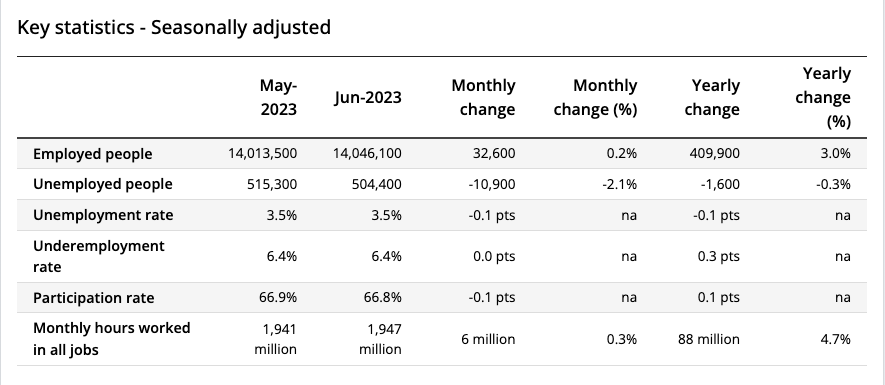Employment up by around 33,000 people, data shows

The unemployment rate remained at 3.5% in June, in seasonally adjusted terms, with employment rising by around 33,000 people and the number of unemployed decreasing by 11,000 people, data released by the Australian Bureau of Statistics has shown.
“The rise in employment in June saw the employment-to-population ratio remain at a record high 64.5%, reflecting a tight labour market in which employment has recently increased in line with population growth,” said Bjorn Jarvis (pictured above left), ABS head of labour statistics.
“In addition to there being over a million more employed people than before the pandemic, a much higher share of the population is employed. In June 2023, 64.5% of people 15 years or older were employed, an increase of 2.1 percentage points since March 2020.”
The participation rate dipped 0.1 ppt to 66.8% from last month’s record high. It dropped 0.2 ppt to 62.5% for women and climbed 0.1 ppt to 71.3% for men.

Unemployment and hours worked
In June, monthly hours worked rose by 0.3% – faster than the 0.2%. growth in employment.
“Over the past 12 months, hours worked increased 4.7%, outpacing the 3% increase in employment,” Jarvis said. “The strength in hours worked since late 2022, relative to employment growth, shows the demand for labour is continuing to be met, to some extent, by people working more hours.”
Consistent with the stronger growth in hours worked was the increase in full-time employment, which was up by 380,000 people over the past year, while part-time employment saw an additional 30,000.
Underemployment and underutilisation
The underemployment rate remained at 6.4%, which was still low in historic terms – around 2.3 ppt lower than before the pandemic. The underutilisation rate, which combines the unemployment and underemployment rates, dropped 0.1 ppt to 9.9%.
Underlying trend data
ABS data showed that for the 11th consecutive month, the trend unemployment rate remained low at 3.5%. In contrast, employment rose by 0.3%, or 39,000, in June and the employment-to-population ratio remained high at 64.5%.
In trend terms, hours worked increased faster than employment, rising 0.5% and 0.3%, respectively. More people are now working full time, with the proportion up to 70.2%, its highest level since December 2012 and 2.0 ppt higher prior to the pandemic.
“The rapid rise in full-time employment has been particularly pronounced for women, rising from 54.2% of employed women just before the pandemic to 57.9% in June 2023 – the highest it has been since 1994,” Jarvis said. “This compares to a more modest increase in the share of employed men working full-time, which increased from 80.9% before the pandemic to around 81.5% in June, around where it was in 2018.”
The participation rate remained unchanged at 66.8%, while the female participation rate surged to a record high of 62.6%.
The underemployment rate lifted by less than 0.1 ppt to 6.4%.
Unemployment and interest rates
“Unemployment remained unchanged today, however we expect that weakness will emerge in the labour sector as we move through the second half of 2023,” said Anneke Thompson (pictured above right), CreditorWatch chief economist.
“We expect that as business conditions continue to weaken and profit margins fall, headcounts will get a lot of attention, particularly given the very strong headcount growth since the pandemic.”
Thomspon said the latest unemployment figures will also not help the Reserve Bank solidify its position ahead of August’s board meeting, as she predicted a further increase at the next meeting.
Use the comment section below to tell us how you felt about this.



